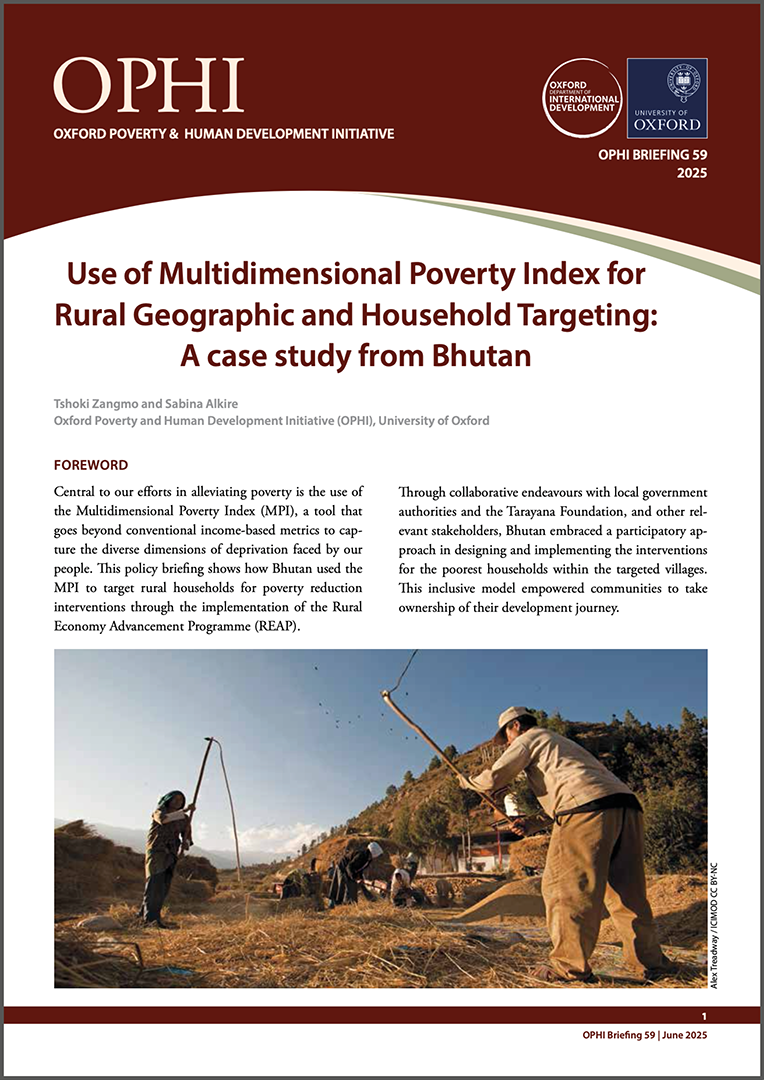Use of Multidimensional Poverty Index for Rural Geographic and Household Targeting: A case study from Bhutan
This policy briefing shows how Bhutan used the Multidimensional Poverty Index (MPI) to target rural households for poverty reduction interventions through the implementation of the Rural Economy Advancement Programme (REAP). Initially piloted during the 10th Five-Year Plan (2008–2013), Phase I of the REAP initiative demonstrated promising outcomes, prompting a need for more structured criteria to assess poverty across multiple dimensions. Subsequently, the programme was scaled up in the 11th Five Year Plan (2014–2018). Phase II of the REAP initiative integrated a household-level Multidimensional Poverty Index (REAP MPI), a revised and expanded MPI that had been tailored to rural areas, as a targeting criterion, ensuring that interventions were directed towards the most vulnerable households and communities.
Citation: Zangmo, T. and Alkire, S. (2025). 'Use of Multidimensional Poverty Index for rural geographic and household targeting: A case study from Bhutan', OPHI Briefings 59, Oxford Poverty and Human Development Initiative (OPHI), University of Oxford.



